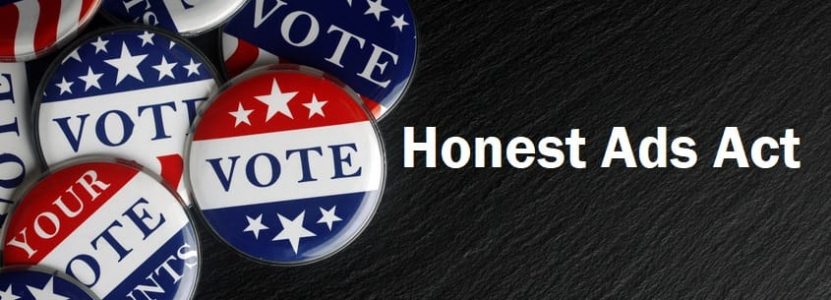Building transparency with a little upfront disclosure
Authored by Chris Olson, CEO & Co-Founder, The Media Trust
The fake news furor and potential Russian involvement in the U.S. 2016 general election is reaching a fever point with multiple congressional hearings, and, digital advertising is in the crosshairs. Like many challenging discussions about digital advertising, transparency is at the heart of the issue.
Digital compliance for political ads
The proposed Honest Ads Act, a bipartisan effort to govern digital advertising according to the same rules followed by traditional broadcast media regarding political advertising, and is the one tangible fallout from the investigations.
The act calls for all politically-oriented digital ads to be declared at purchase, clearly labeled in the creative, and available for consumer access via a searchable interface. Among other things, the buyer must disclose their contact information, candidate and/or campaign, ad flight duration, number of impressions/views, and targeting criteria. The platform must collect this information and retain it for at least four years. It applies to digital platforms with at least 50 million unique visitors a month for the preceding 12-month period that have political ad buyers who spend at least $500 within a calendar year.
In a nutshell, it requires publishers know their ad buyers, ensure ads comply with (regulatory) policies and provide consumer access to these ads and any associated targeting criteria. Sounds familiar?
Transparency starts with the buyer
As The Media Trust announced a few short months ago, our Digital Vendor Risk Management (DVRM) platform provides real-time visibility and insight into non-compliant activity and threats operating in an enterprise website and mobile app environments. More than a risk management framework, DVRM operationalizes client-specific digital asset policies, continuously evaluates digital partner compliance, and actively facilitates the resolution of violating behavior.
The crux of this solution is the ability to identify and manage an enterprise’s digital ecosystem participants, from ad tech up to the source buyer, and authorize their presence. In addition to privacy regulation and escalating security concerns, the Honest Ads Act is just another reason why enterprises need to know their partners.
DVRM – A simple solution to a complex problem
Applying a political lens to DVRM it’s evident that the platform is already satisfying most of the requirements to enable transparency and accountability. Advertising supply chain partners register via an online portal; ads are uploaded and continuously scanned according to targeting criteria; client-specific policy violations are flagged; and, ads are stored for historical reference.
Self-regulation forces a new digital approach
Major platforms have announced their approaches to address congressional concerns and hopefully stave off the vote, let alone passage, of the Honest Ads Act. However, this self-regulation will need to extend to others meeting the requirement threshold, like ecommerce and media publishers.
Regardless of Honest Ads going to vote, changes are in the air. As an industry that has largely grown via self-regulation, the signals are obvious. It is incumbent upon the industry to embrace these changes, especially with the DVRM platform as an easy way to codify and operationalize your policies.

